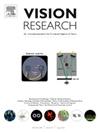The subtypes of visual hypersensitivity are transdiagnostic across neurodivergence, neurology and mental health
IF 1.4
4区 心理学
Q4 NEUROSCIENCES
引用次数: 0
Abstract
Many areas of neurodivergence are associated with heightened sensitivity, discomfort, and aversion to certain visual stimuli (e.g., bright lights, patterns, movement, flicker, complex scenes). This hypersensitivity also associates with mental health and some areas of neurology. However, it remains unclear whether this is a transdiagnostic phenomenon, implying a common underlying mechanism of shared vulnerability, or whether the forms of visual discomfort differ instructively across the wide range of associated conditions and areas of neurodivergence. We compared the four recently clarified subtypes of visual hypersensitivity (Brightness, Pattern, Strobing, Intense Visual Environments) self-reported by 2582 participants across 11 areas of neurodivergence, neurology, and mental health: Autism, ADHD, Dyslexia, Dyspraxia, Fibromyalgia, Migraine, PPPD, synaesthesia, Distress, Eating Pathology, and Fear (HiTOP System). Enhanced sensitivity in all four factors was reported for every area. Sensitivity to Intense Visual Environments was especially pronounced across Autism, ADHD, Dyslexia, and Dyspraxia, forming a shared pattern. The same pattern was shared with fibromyalgia and PPPD, and to some extent with Eating Pathology and Fear, while migraine and synaesthesia showed a different pattern. Regression analyses controlling for comorbidities showed significant unique prediction by 9 out of 11 neurodivergence/condition labels, the strongest predictors being autism, fibromyalgia, migraine, and PPPD. In conclusion, the four factors of visual hypersensitivity are all transdiagnostic, and the relative emphasis on each factor also forms transdiagnostic patterns that transcend traditional discipline boundaries. This implies there are common underlying vulnerabilities in the development of perceptual systems that can be associated with a wide range of other symptomologies.
视觉超敏症的亚型在神经分化、神经学和心理健康方面是跨诊断的
神经分化的许多领域与对某些视觉刺激(如强光、图案、运动、闪烁、复杂场景)的高度敏感、不适和厌恶有关。这种过敏还与心理健康和神经学的某些领域有关。然而,目前尚不清楚这是否是一种跨诊断现象,意味着共同脆弱性的共同潜在机制,或者视觉不适的形式是否在广泛的相关条件和神经分化区域之间具有指导意义。我们比较了来自神经分化、神经学和心理健康11个领域的2582名参与者自我报告的四种最近明确的视觉超敏症亚型(亮度、模式、频闪、强烈视觉环境):自闭症、多动症、阅读障碍、运动障碍、纤维肌痛、偏头痛、PPPD、联觉、痛苦、饮食病理学和恐惧(HiTOP系统)。据报道,在所有四个因素中,每个区域的敏感性都有所提高。对强烈视觉环境的敏感性在自闭症、多动症、阅读障碍和运动障碍中尤为明显,形成了一个共同的模式。纤维肌痛和PPPD也有相同的模式,在一定程度上也有进食病理学和恐惧,而偏头痛和联觉则表现出不同的模式。控制合并症的回归分析显示,11个神经分化/疾病标签中有9个具有显著的独特预测,最强的预测因子是自闭症、纤维肌痛、偏头痛和PPPD。综上所述,视觉超敏症的四个因素都是跨诊断的,对各个因素的相对重视也形成了超越传统学科界限的跨诊断模式。这意味着在知觉系统的发展中存在共同的潜在脆弱性,这些脆弱性可能与广泛的其他症状相关联。
本文章由计算机程序翻译,如有差异,请以英文原文为准。
求助全文
约1分钟内获得全文
求助全文
来源期刊

Vision Research
医学-神经科学
CiteScore
3.70
自引率
16.70%
发文量
111
审稿时长
66 days
期刊介绍:
Vision Research is a journal devoted to the functional aspects of human, vertebrate and invertebrate vision and publishes experimental and observational studies, reviews, and theoretical and computational analyses. Vision Research also publishes clinical studies relevant to normal visual function and basic research relevant to visual dysfunction or its clinical investigation. Functional aspects of vision is interpreted broadly, ranging from molecular and cellular function to perception and behavior. Detailed descriptions are encouraged but enough introductory background should be included for non-specialists. Theoretical and computational papers should give a sense of order to the facts or point to new verifiable observations. Papers dealing with questions in the history of vision science should stress the development of ideas in the field.
 求助内容:
求助内容: 应助结果提醒方式:
应助结果提醒方式:


